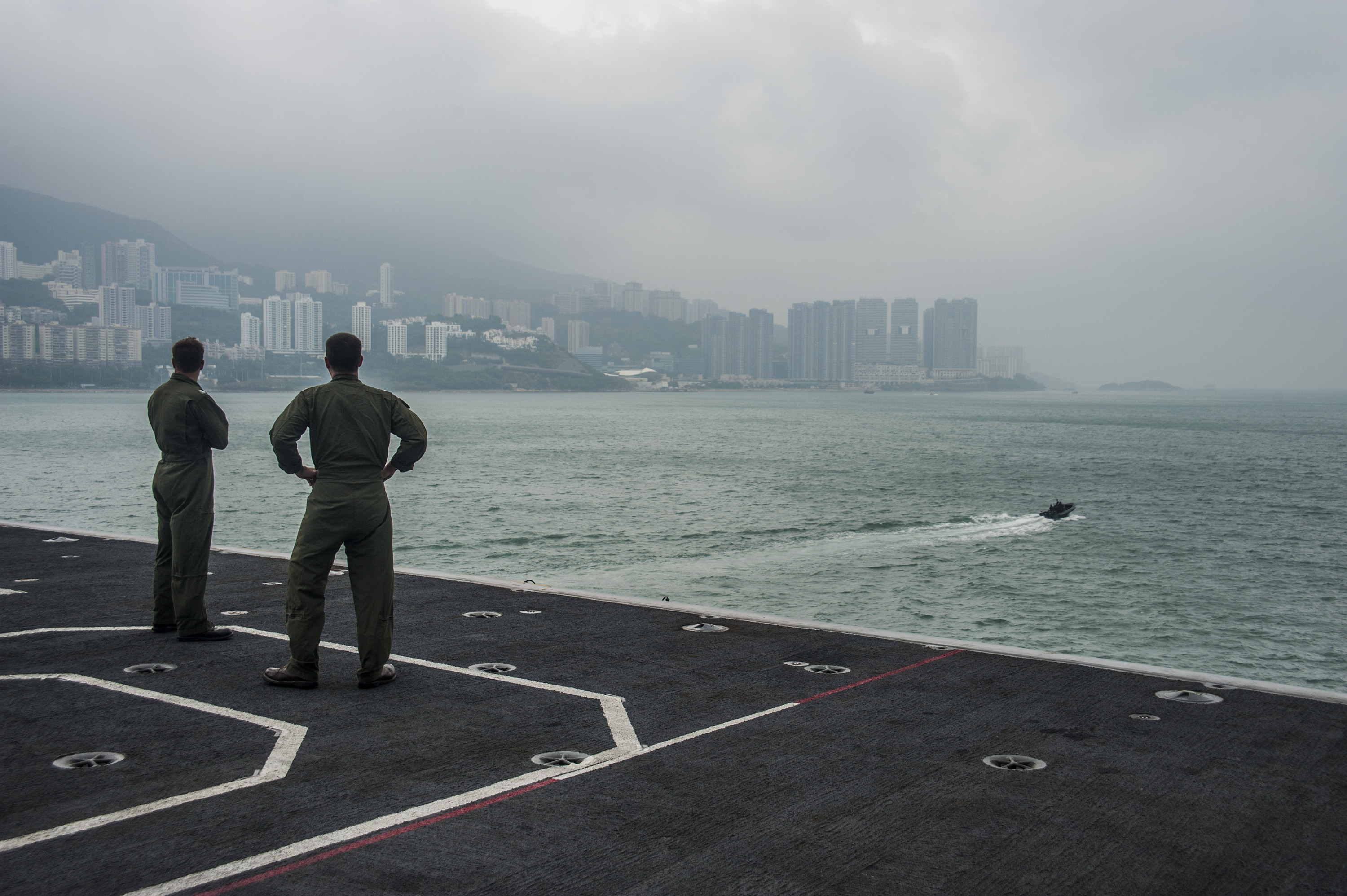
This post was updated with additional information about USS McCampbell (DDG-85), which in August was denied permission to visit the Chinese port of Qingdao.
Shortly after protests began rocking Hong Kong over a controversial extradition bill, the Chinese government quietly started denying U.S. Navy ships permission to visit the port city.
On Monday, the Chinese government formalized what had been in practice since at least July, suspending until further notice the review of U.S. military applications to send ships and aircraft to visit Hong Kong.
“We are aware the People’s Republic of China has suspended U.S. Navy port visits to Hong Kong. We hope to conduct future port visits to Hong Kong that support quality of life for our Sailors. U.S. Navy ships, sailors and Marines have enjoyed port visits in Hong Kong since 1842, when the USS Constellation first pulled into Victoria Harbor,” Cmdr. Myers Vasquez, a U.S. Pacific Fleet spokesman, told USNI News.
The official reason for halting U.S. Navy ship visits to Hong Kong is the Hong Kong Human Rights and Democracy Act of 2019, passed by Congress and signed by President Donald Trump last week, according to a statement released by Hua Chunying, a spokesperson for China’s Foreign Ministry.
“The United States has seriously violated the international law and basic norms governing international relations, and interfered in China’s internal affairs by signing the so-called Hong Kong Human Rights and Democracy Act of 2019 into law despite China’s firm opposition,” Hua said, according to an official ministry English-language release. “China urges the U.S. to correct its mistake and stop meddling in Hong Kong affairs or interfering in China’s other internal affairs by any word and act.”
During the past six months, Beijing denied six proposed U.S. Navy ship visits to Hong Kong, according to U.S. Pacific Fleet:
- San Antonio-class amphibious transport dock USS Green Bay (LPD-20), scheduled to visit in August
- Ticonderoga-class guided-missile cruiser USS Lake Erie (CG-70), scheduled to visit in September
- Avenger-class mine countermeasures ship USS Patriot (MCM-7), scheduled to visit in October
- USS Warrior (MCM-10), scheduled to visit in October
- USS Milius (DDG-69), scheduled to visit in November
- Littoral Combat Ship USS Gabrielle Giffords (LCS-10), scheduled to visit in December
A seventh ship, Arleigh Burke-class guided-missile destroyer USS McCampbell (DDG-85), was denied permission to visit the northern Chinese port of Qingdao August.
Since control of Hong Kong reverted to Beijing 22 years ago, the Chinese government has a track record of denying the U.S. Navy access to Hong Kong during times of civil unrest or as a means to protest actions taken by the U.S. government. Before 1997, Hong Kong was a colony of Great Britain for 155 years.
In August 2014, the Chinese government denied a U.S. Navy request for USS Halsey (DDG-97) to visit Hong Kong. The denial occurred after tens of thousands, if not hundreds of thousands, of Hong Kong residents marched to protest Beijing’s control of Hong Kong. Protest organizers and government officials provided dramatically different estimates of how many people participated in the annual July 1 protest against Chinese rule, according to several media accounts at the time, including a BBC report.
In April 2016, Beijing denied a planned port visit by USS John C. Stennis (CVN-74) and four ships in its strike group — USS Mobile Bay (CG-53), USS Stockdale (DDG-106), USS William P. Lawrence (DDG-110) and USS Chung-Hoon (DDG-93). At the time, Beijing did not provide a reason for the denial. Experts at the time speculated Chinese officials might have been unhappy about then-Secretary of Defense Ash Carter’s recent visit to Stennis.
Interestingly, while Hong Kong remains a popular port visit, the Navy has scaled back the actual logistical importance of the port. In May 2017, the Navy announced future fleet freight routing “will no longer be supported due to space scarcity and high rental prices in the local market,” according to a release from Naval Supply Systems Command. “However, for high-priority material, ships can still coordinate their routing directly with Site Hong Kong if the material is within the allotted weight and dimension.”





